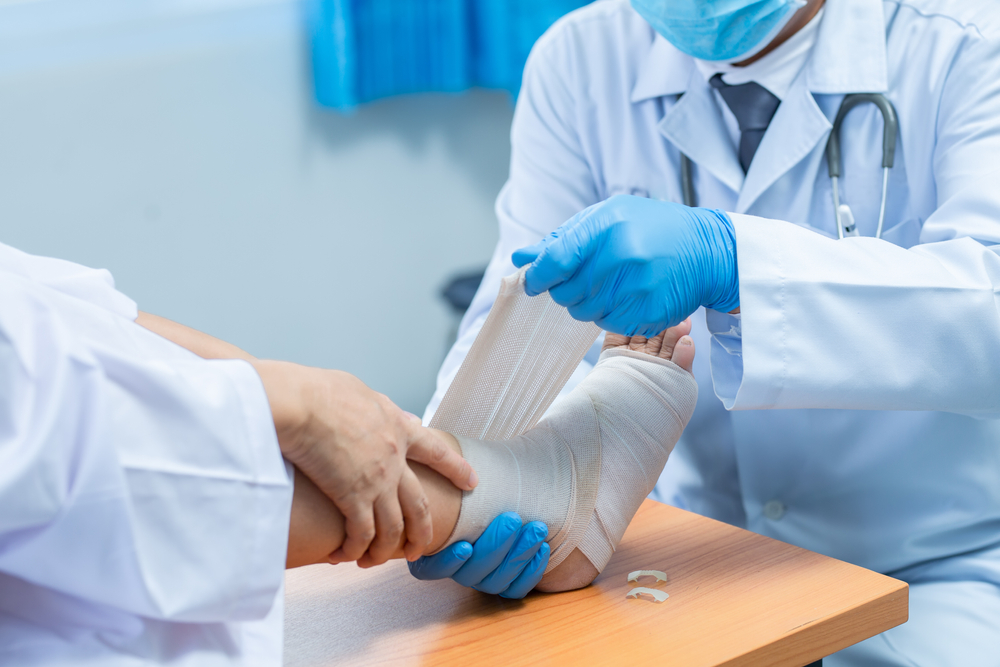A wound that won’t heal may eventually become a limb- and life-threatening emergency. Our wound care specialist explains the characteristics of a chronic wound, what it might signal about your overall health and the treatments that help speed healing.
Dr. Manjulatha Badam is trained and board-certified in internal medicine, advanced wound care, and hyperbaric medicine. With more than 15 years of clinical experience, she specializes in treating complex chronic wounds.
At Vayu Advanced Wound Clinic & Hyperbarics in San Antonio, Texas, Dr. Badam and her team provide innovative and patient-focused chronic wound treatment that delivers outstanding outcomes.
What is a Chronic Wound?
Skin wounds typically undergo a complex four-step healing process that your body initiates naturally. Depending on the injury’s size, location, and cause, healing generally occurs within three months.
However, chronic wounds fail to progress through these stages as expected. Any wound, from a minor abrasion to a major surgical incision, can become chronic.
Four Stages of Wound Healing:
- Hemostasis: Blood clotting to stop bleeding.
- Inflammatory Stage: White blood cells fight infection and clear debris.
- Proliferative Stage: Collagen production and new tissue growth begin.
- Maturation Stage: Tissue strengthens and remodels, continuing after visible healing.
When a wound remains stalled in the inflammatory phase, it’s considered chronic and requires medical intervention.
Causes of Chronic Wounds
Chronic wounds often result from underlying health issues or external factors, including:
- Circulatory Problems: Impaired blood flow reduces oxygen and nutrient delivery.
- Infections: Persistent bacterial or fungal infections hinder healing.
- Medical Conditions: Diabetes, peripheral arterial disease (PAD), and chronic venous insufficiency can delay healing.
- Aging: Older adults tend to heal more slowly.
- Prolonged Immobility: Conditions like bedsores arise from limited movement during illness or injury.
Why Seek Treatment for a Chronic Wound?
Ignoring a chronic wound can lead to severe health consequences. These wounds may deepen and expand, involving muscles, bones, or other underlying tissues. If untreated, chronic wounds can result in:
- Infections that spread to other organs.
- Tissue death (gangrene).
- Limb amputation to prevent further complications.
How Does Wound Care Help?
At Vayu Advanced Wound Clinic & Hyperbarics, we use a tailored approach to enhance your body’s natural healing. Our comprehensive wound care treatments include:
- Antibiotics to manage infections.
- Advanced dressings such as collagen or skin substitutes.
- Hyperbaric Oxygen Therapy (HBOT): Increases oxygen levels at the wound site.
- Negative Pressure Wound Therapy (NPWT): Draws out infections.
- Compression Bandaging: Promotes healthy circulation.
- Surgical Debridement: Removes dead tissue for better healing.
We also address underlying health issues like diabetes or PAD to prevent wound recurrence.
Don’t delay—schedule your evaluation today by calling Vayu Advanced Wound Clinic & Hyperbarics in San Antonio, Texas, or booking online.
FAQs About Chronic Wounds
How are chronic wounds treated?
Chronic wounds are treated through a combination of therapies, such as antibiotics, advanced wound dressings, surgical debridement, hyperbaric oxygen therapy (HBOT), and compression bandaging. Treatment often includes addressing underlying conditions like diabetes or circulatory issues.
What is the most effective solution used to clean a chronic wound?
Normal saline is widely considered the most effective solution for cleaning chronic wounds. It helps remove debris and bacteria without damaging healthy tissue. In some cases, specialized antiseptic solutions may be used under medical guidance.
How to treat wounds that won’t heal?
Treating non-healing wounds involves a comprehensive approach, including wound debridement, infection management, advanced dressings, and therapies like HBOT. Identifying and addressing underlying health conditions is also crucial.
What are the three main types of chronic wounds?
The three main types of chronic wounds are:
- Venous ulcers (caused by poor vein circulation).
- Arterial ulcers (due to reduced arterial blood flow).
- Diabetic foot ulcers (resulting from diabetes-related complications).
How long does it take for a chronic wound to heal?
Healing time varies depending on the wound’s severity and underlying conditions. With proper treatment, most chronic wounds start to show improvement within weeks, but complete healing may take months.
How can I speed up the healing of a chronic wound?
To accelerate healing, follow your wound care specialist’s advice, maintain a healthy diet rich in protein and vitamins, manage underlying conditions, and keep the wound clean and properly dressed. Therapies like HBOT can also enhance healing.
What is the best dressing for a chronic wound?
The best dressing depends on the wound’s type and condition. Options include hydrocolloids, alginates, collagen, and antimicrobial dressings. Your wound care specialist will recommend the most suitable dressing to promote healing.

